Babysitting Games: The Ultimate Guide to Keeping Kids Entertained and Happy
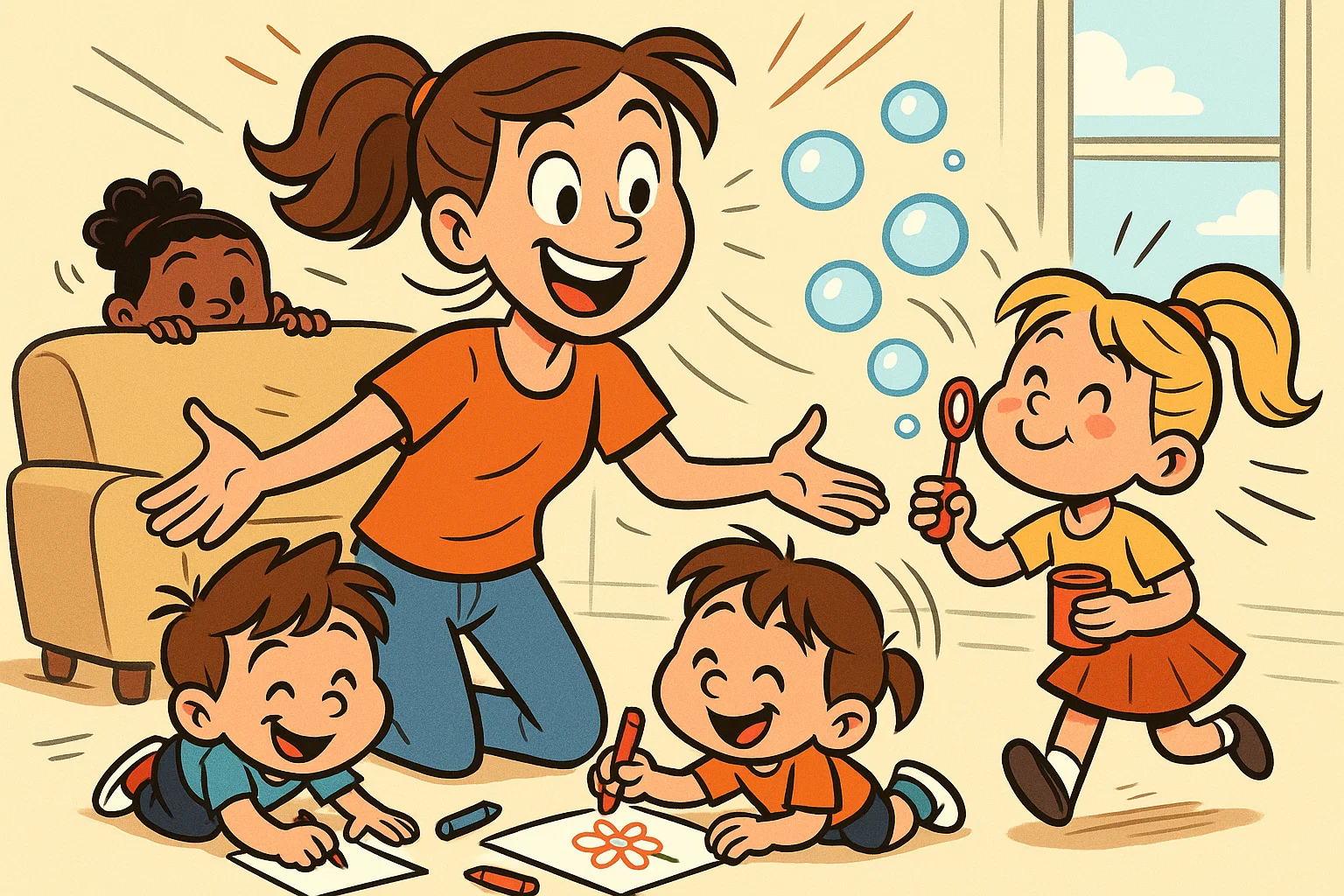
Being a great babysitter is about more than just ensuring safety and following the bedtime routine; it’s about making the time spent together meaningful and fun. When you’re babysitting children, a well-stocked toolbox of games and activities is your secret weapon. The right babysitting game does more than pass the time—it sparks joy, encourages creativity, and supports healthy development.
This comprehensive guide is designed to equip you with a diverse range of fun babysitting games to play, from quiet indoor pursuits for rainy days to energizing outdoor play that burns off steam. We’ll explore age-appropriate ideas, creative projects, and the essential safety tips you need to confidently and skillfully keep the kids entertained. Get ready to transform your next babysitting job from a simple obligation into an opportunity for playful learning and genuine connection.
Importance of Babysitting Games and Activities
Why are games to play so crucial when you’re on the babysitting job? They are the cornerstone of a successful experience for both you and the children. Structured and imaginative play offers a dynamic way to bond, manage behavior, and keep children entertained without resorting to excessive screen time.
Benefits for kids’ learning and development
Play is how children learn about the world. Babysitting games and activities are much more than just a way to keep kids engaged; they are vital educational tools.
- Cognitive Skills: Games like “Memory Match” or scavenger hunts improve memory, problem-solving, and focus.
- Motor Skills: Activities such as building an obstacle course or playing “Red Light, Green Light” develop gross motor skills and coordination. Fine motor skills are honed through arts and crafts like cutting and gluing.
- Social and Emotional Development: Taking turns, sharing materials, and following rules in a classic game teach essential social skills and emotional regulation.
“Play is the highest form of research,”
noted Albert Einstein. As a caregiver, facilitating this research through fun games is one of your primary roles.
Benefits for babysitters
Having a repertoire of babysitting activities makes your job easier and more enjoyable. Knowing how to entertain kids effectively builds your confidence and reputation.
- Easier Transitions: Games can be used to smooth transitions, like moving from playtime to dinner or calming down before bedtime.
- Behavior Management: A distracted, bored child is often a challenging child. Fun babysitting comes from preempting boredom with engaging activities.
- Stronger Connection: Actively playing games with the children allows you to connect with them on their level, building trust and rapport.
Balancing fun with safety
While the goal is to have fun, safety always comes first. All games and activities must be conducted with careful supervision, especially when involving younger children or high-energy play. A safe environment ensures that the children are entertained and happy without unnecessary risk. Always check the play area for hazards, and ensure that all craft supplies and household items used are non-toxic and age-appropriate.
Indoor Babysitting Games
When the weather is bad or the kids need to wind down, great indoor games are essential. These ideas use common household items and require little to no prep.
Classic hide-and-seek variations
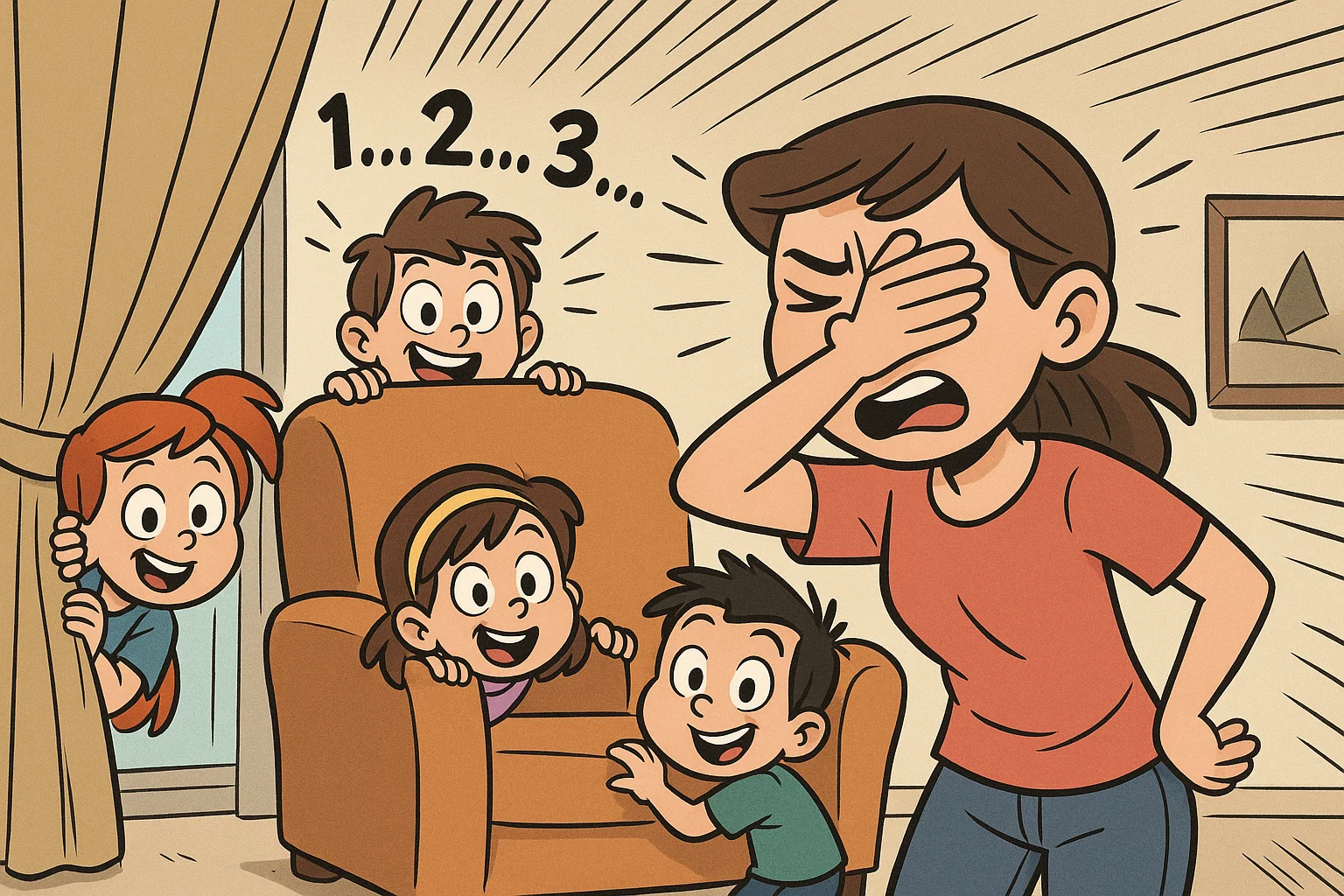
Hide and seek is a classic babysitting game that never gets old, but you can spice it up:
- Sardines: One person hides, and everyone else searches. When a seeker finds the hider, they quietly join them in the hiding spot until only one person is left searching.
- Flashlight Hide and Seek (with permission): A low-light version that adds a spooky, exciting element.
Simon Says and Freeze Dance
These are perfect for practicing listening skills and burning off a little energy.
| Game | Skill Developed | Best For |
| Simon Says | Auditory Processing, Following Directions | Younger Kids (3+) |
| Freeze Dance | Impulse Control, Gross Motor Skills | Kids of all ages |
For freeze dance, play some upbeat music and have the kids dance. When the music stops, they must freeze in place until it starts again. This simple game works wonders.
DIY Scavenger Hunt
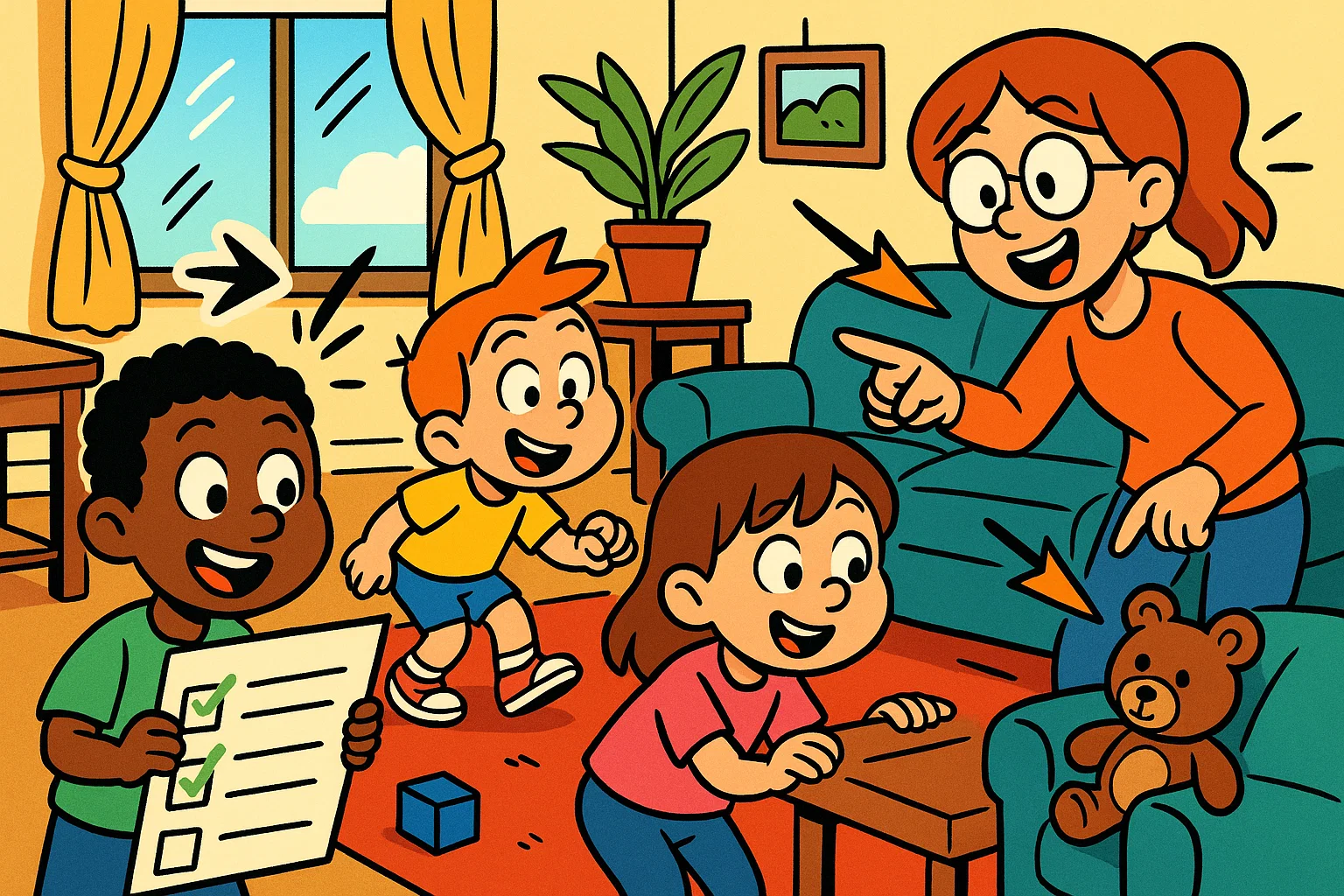
An indoor scavenger hunt is a fantastic way to keep kids occupied and use their cognitive skills.
- Create a list of items: Keep it simple for younger children (e.g., something red, a spoon, a shoe).
- Make it a challenge: For older kids, use rhyming clues or riddles for the items to find.
- Thematic Hunt: Base the list on a theme, like “ocean treasures” or “things a puppy needs.”
Indoor camping and pretend play
Use blankets, pillows, and paper plates (for makeshift steering wheels or signs) to create a fort or an indoor obstacle course. This encourages imaginative pretend play and can keep many kids happily entertained. Let the kids sit in their cozy new space to read books or share stories.
Outdoor Babysitting Games
When you have the chance for outdoor play, embrace it! These outdoor games offer high-energy fun and are a great way to develop physical skills.
Obstacle course
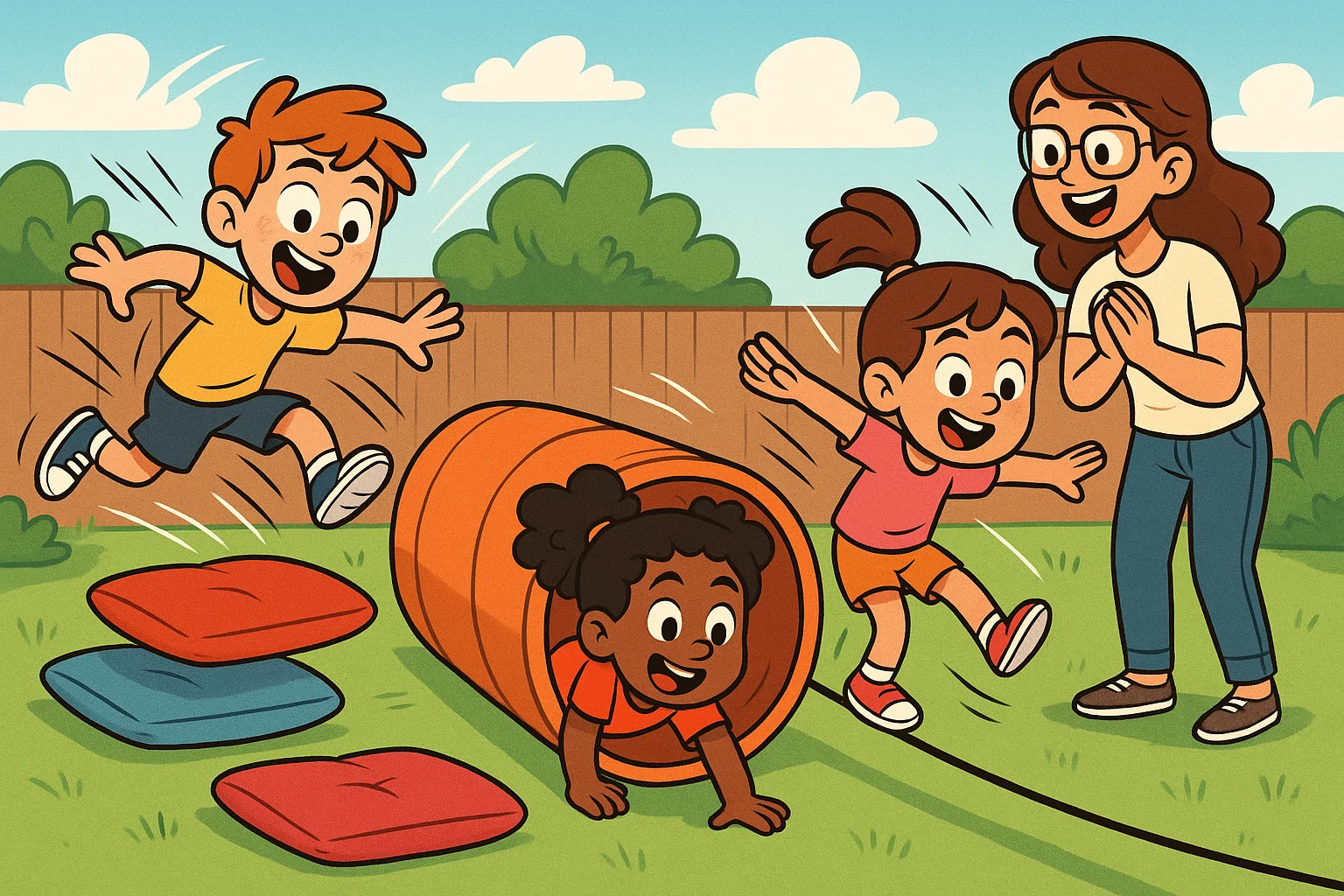
A backyard obstacle course is the ultimate fun activity for physical development.
- Crawl under a blanket draped over two chairs.
- Jump over a line of laid-out pool noodles.
- Weave around cones or toys.
- Do a classic game like a three-legged race with a partner.
Red Light, Green Light and Tag
These are simple, high-engagement classic babysitting games:
- Red Light, Green Light: Helps with impulse control and listening.
- Tag Variations: Try “Freeze Tag” (where a tagged person must freeze in place until a teammate unfreezes them) or “Shadow Tag” (only tag someone’s shadow).
Water balloon toss and bubble blowing
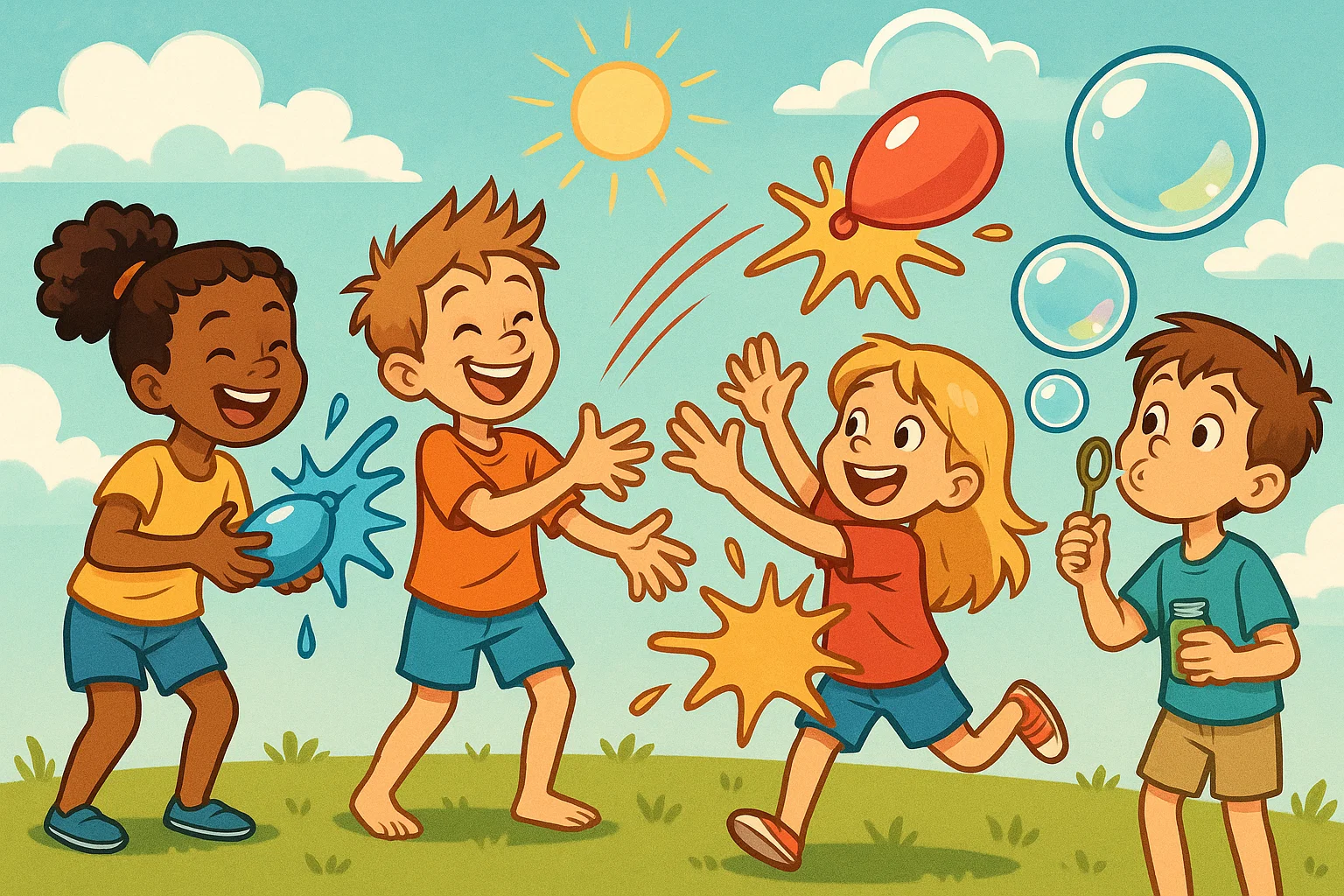
On a warm day, a supervised water balloon toss is a huge hit! For younger children, simple bubble blowing offers endless fascination and helps with breath control. These are fun things to do in the yard.
Nature scavenger hunt
Take the indoor hunt outside. Ask the kids to find natural items like a smooth rock, a specific type of leaf, a feather, or a dandelion. This is a great way to connect with nature and encourages observation skills.
Educational Babysitting Games
Playing games is the most effective way to learn. These ideas subtly weave in educational elements, making learning feel like fun.
Memory match and card games
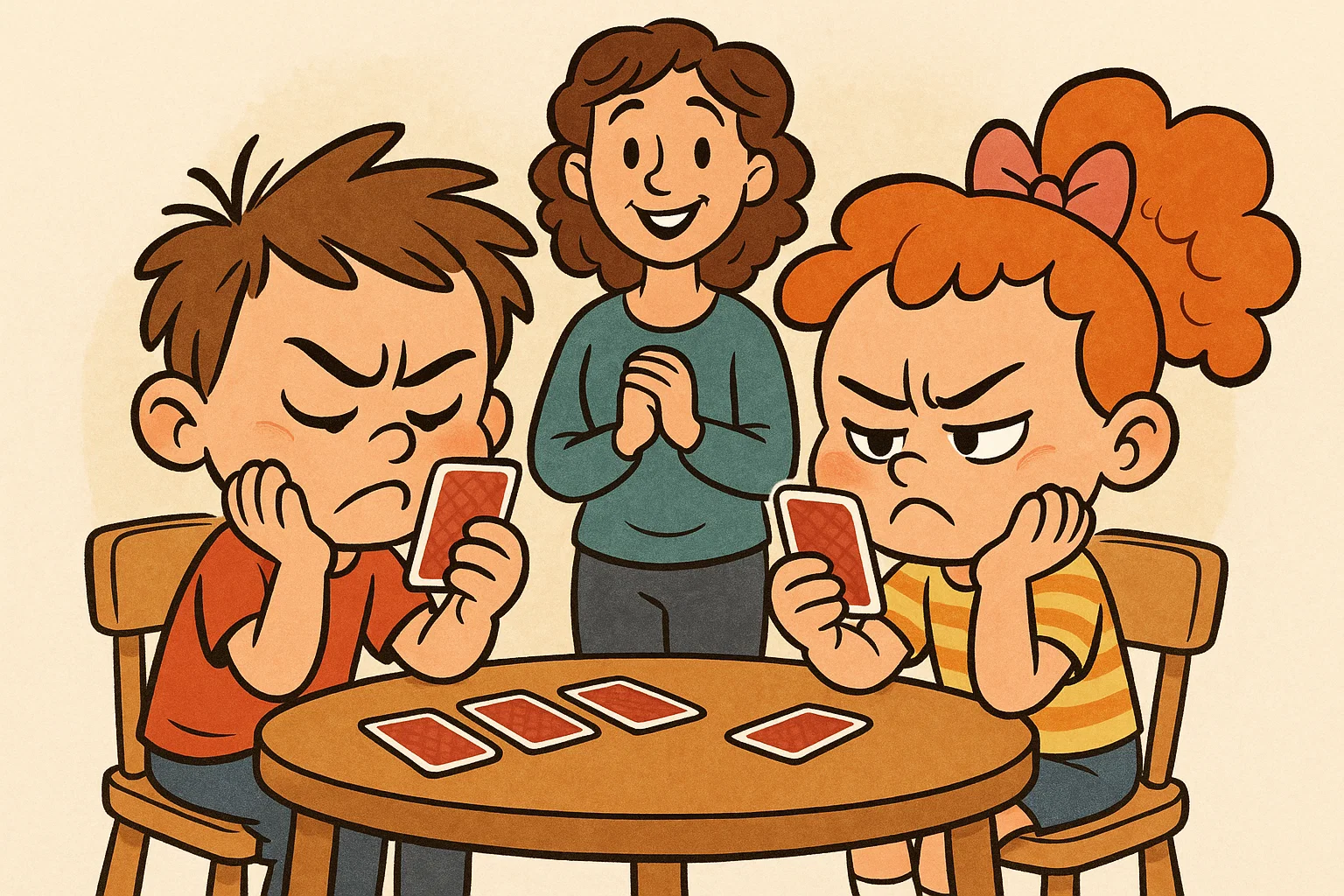
A simple deck of cards can provide hours of fun.
- Go Fish or Crazy Eights are great for teaching number and pattern recognition.
- A memory match game (using cards or game pieces you find) strengthens recall.
Storytelling and charades
Charades and Pictionary help develop non-verbal communication and dramatic play. Storytelling can be a collaborative interactive game: start a story with one sentence, then have each child (and you!) take turns adding the next sentence. This is a powerful way to keep kids engaged and creative.
Mini science experiments
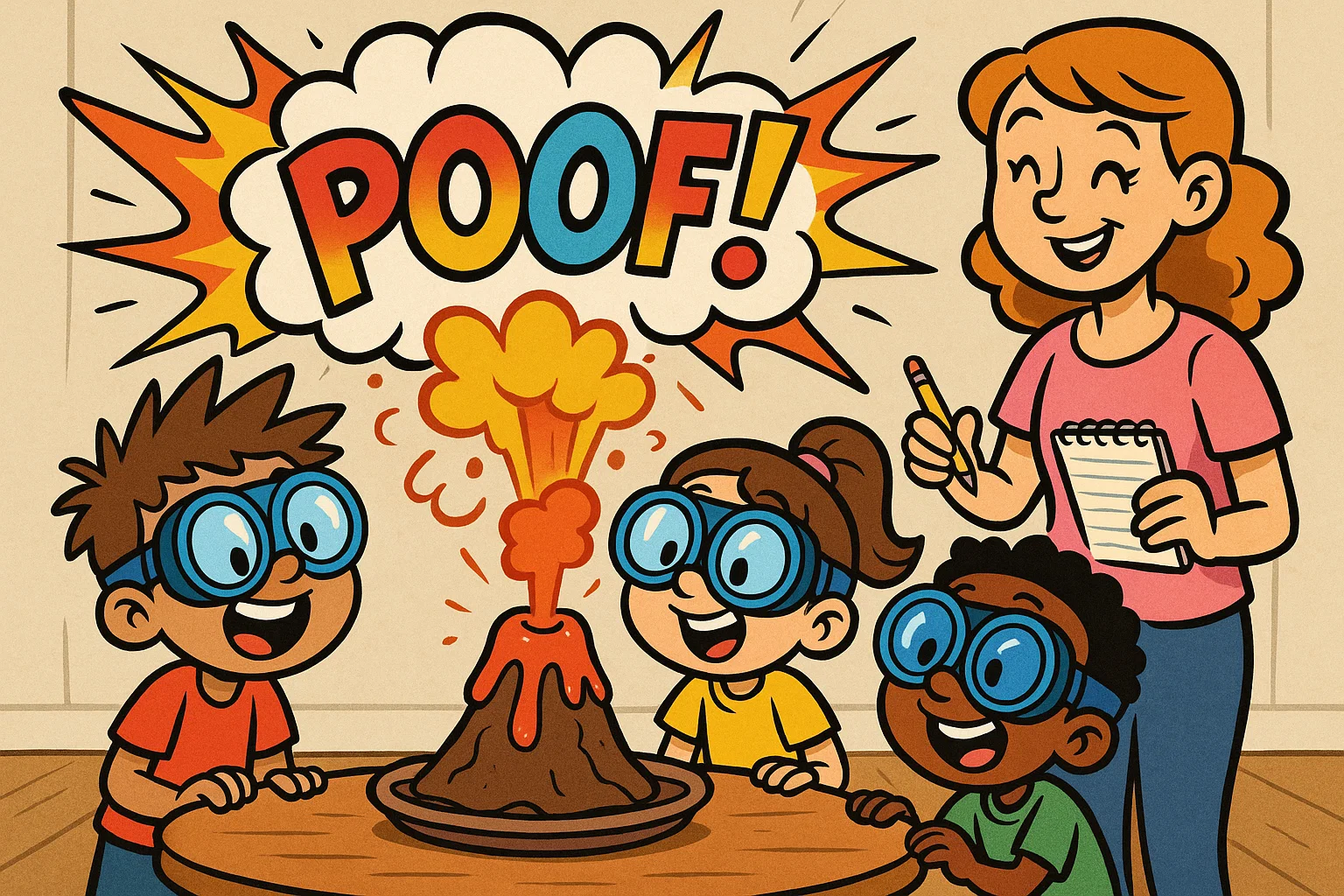
You don’t need a lab! Simple, safe experiments using everyday items can be incredibly engaging:
- Volcano: Baking soda and vinegar in a small cup.
- Floating/Sinking: Gather objects and predict which will float and which will sink in a bowl of water.
Counting and word-based games
Games that involve words and numbers are perfect for the car or winding down.
- I Spy: A classic game that improves descriptive language skills.
- 20 Questions: A guessing game that helps with deductive reasoning.
Creative and Craft Babysitting Activities
Arts and crafts projects are a wonderful fun activity that encourages self-expression and improves coordination and motor skills.
Art corner and drawing contests
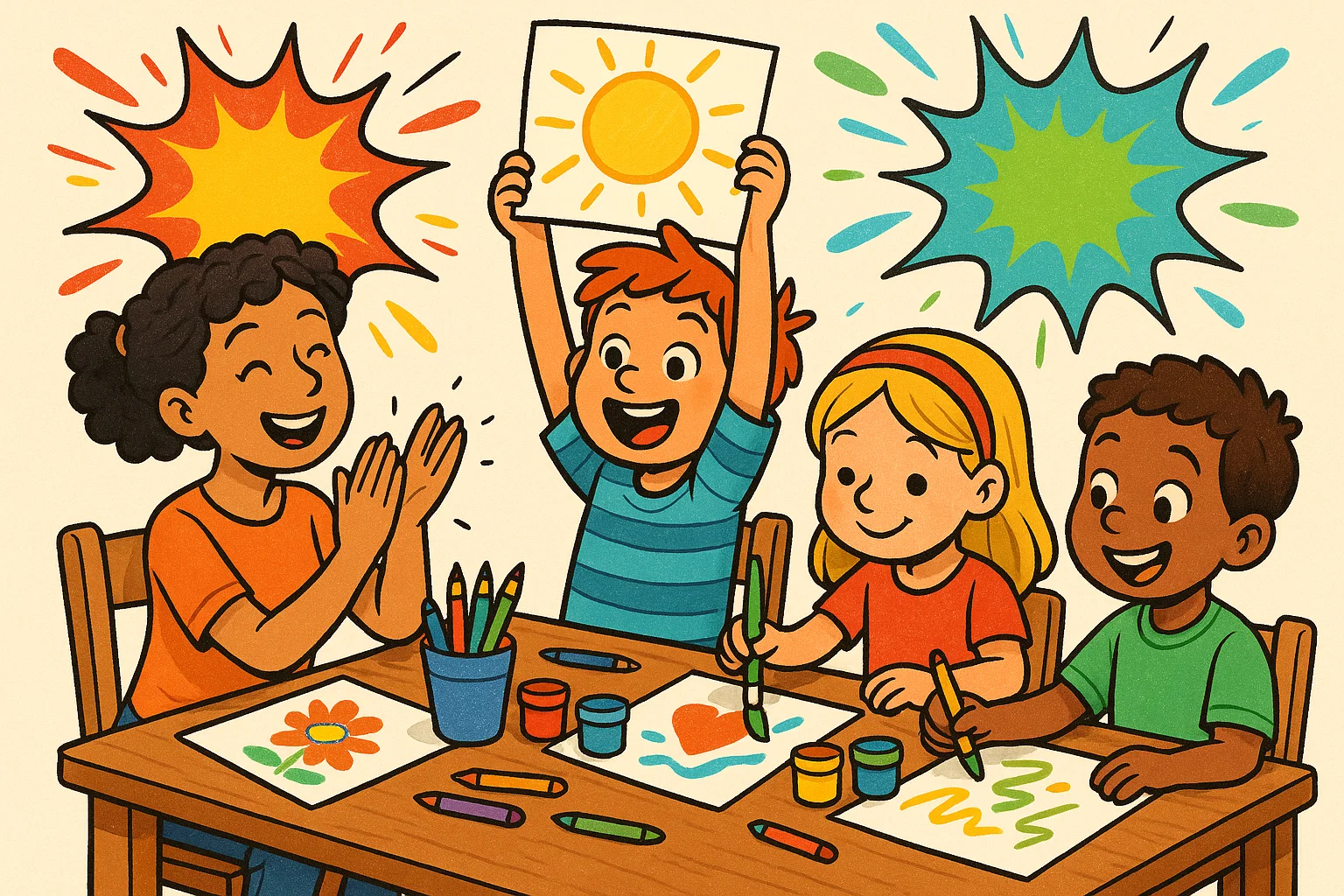
Set up an “Art Corner” with paper, crayons, markers, and craft supplies. A simple drawing contest with funny categories (e.g., “Silliest Monster,” “Coolest Spaceship”) can add structure. This is a fun art and craft idea that requires minimal prep.
Easy crafts with paper and household items
You can find materials for dozens of craft activities around the house:
- Toilet Paper Roll Crafts: Make puppets, binoculars, or little animals.
- Collage: Use old magazines, newspapers, and construction paper to cut and paste.
- Mask Making: Cut out mask shapes from paper plates and decorate them.
Seasonal crafts and holiday-themed projects
Tailor your crafts to the time of year. Think paper snowflakes in winter or leaf rubbings in the fall. This is a way to keep kids focused on a specific, timely goal.
Baking and simple cooking
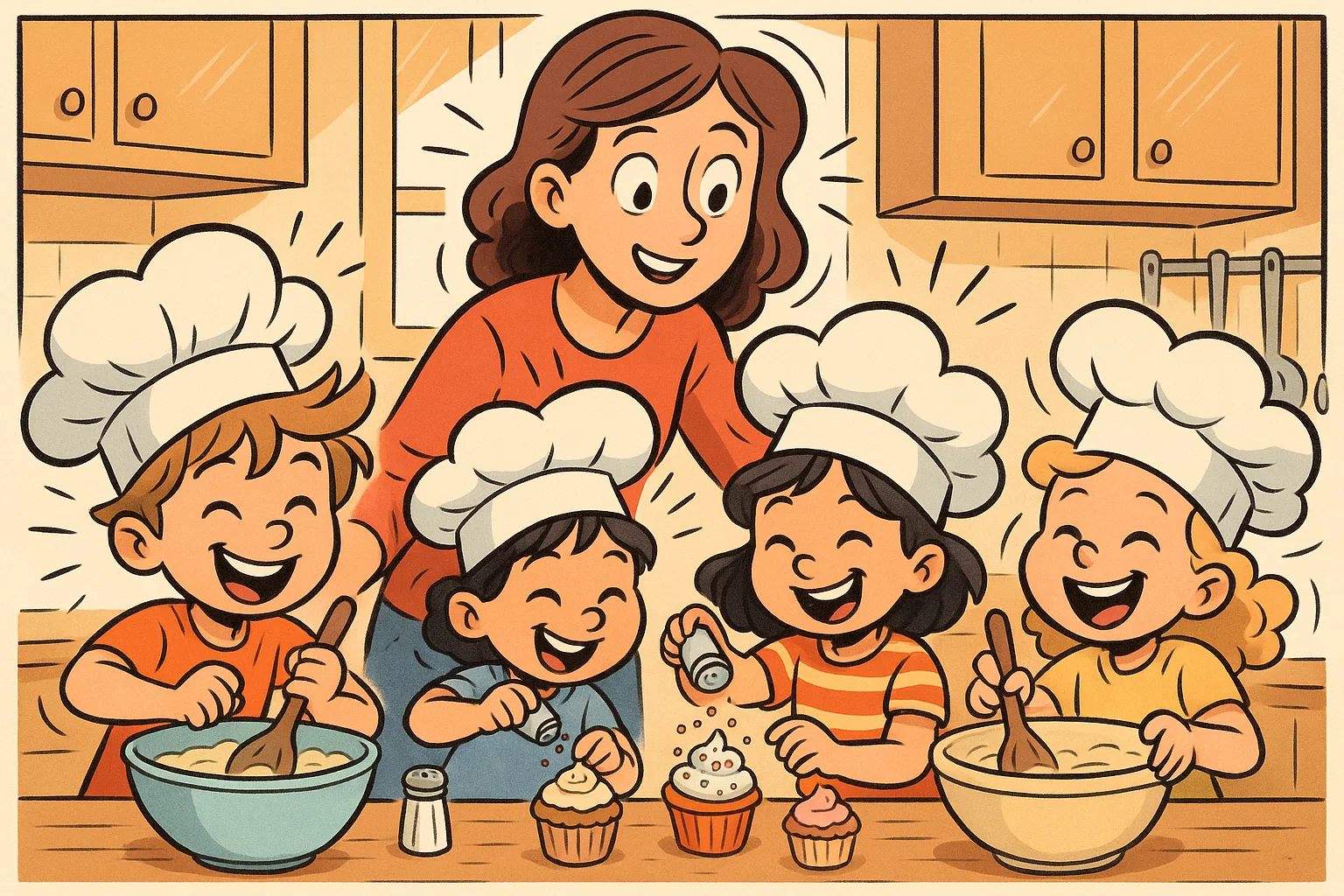
With parent permission and close supervision, making something in the kitchen can be an incredibly rewarding babysitting activity. Simple tasks like mixing batter for cookies or decorating pre-made cupcakes are fun ideas that yield a tasty reward.
Group and Interactive Babysitting Games
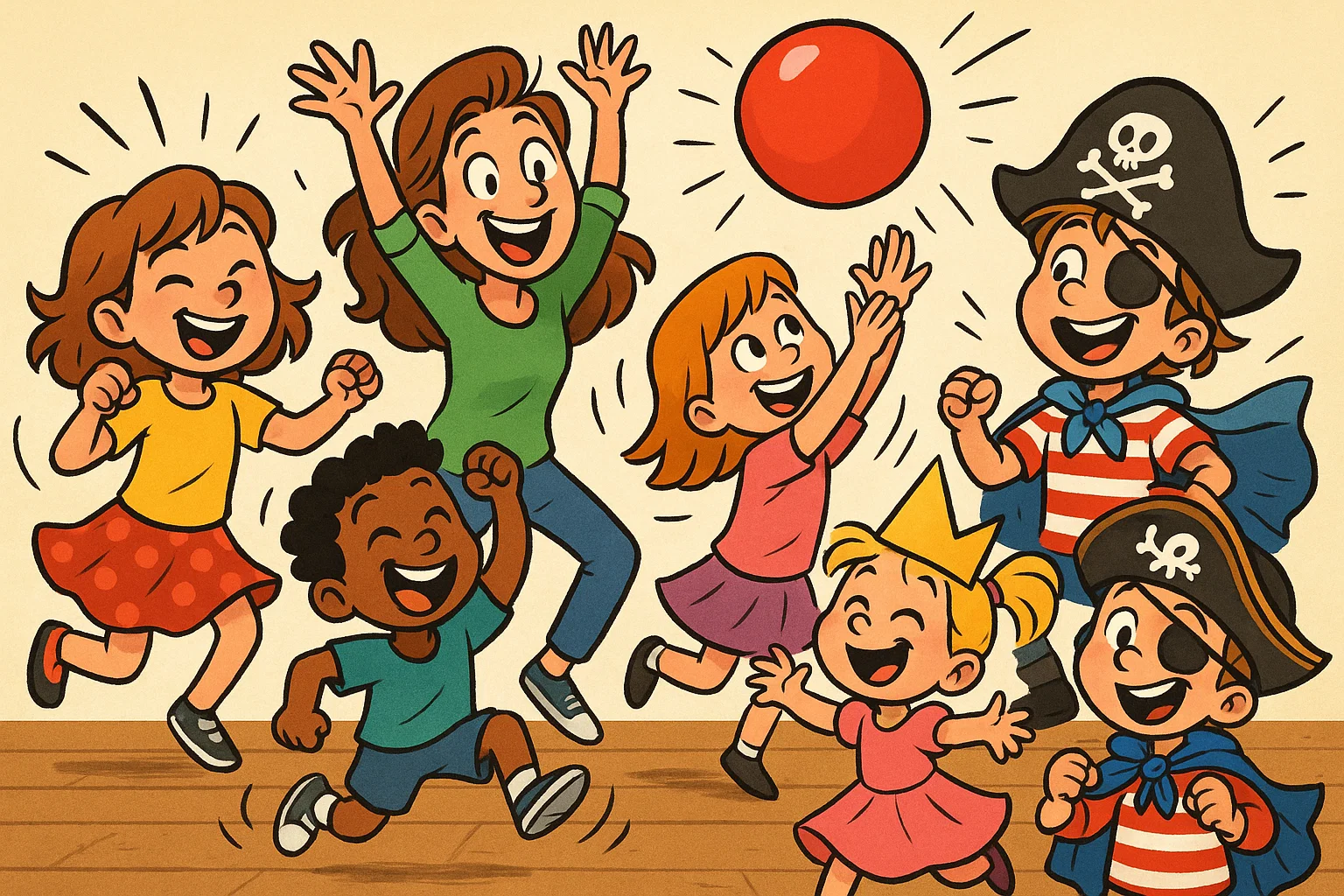
When you’re babysitting many kids, finding games that foster teamwork and shared fun is key.
Dance party and freeze dance
A full-blown kids dance party with fun, upbeat music is a guaranteed way to lift spirits and get everyone moving. As mentioned before, freeze dance is a great way to add a structured element.
Balloon volleyball or bowling
A simple balloon makes a wonderful, non-damaging game piece for indoor volleyball. For bowling, set up plastic cups or empty water bottles and use a soft ball or rolled-up socks to knock them down. This is an easy game that focuses on hand-eye coordination.
Dress-up adventures and role play
Open the closet and let the kids transform into doctors, superheroes, or royalty.Dress-up adventures encourage creativity and social role play. You can even use the dress-up as a basis for a collaborative story.
Involving older siblings
If older kids are present, give them a leadership role. Let them be the “game captain” or the one who designs the indoor obstacle course. Giving them responsibility helps them feel valued and keeps them engaged in the babysitting game.
Safety Tips for Babysitting Games
A responsible babysitter always puts safety first.
Age-appropriate activity selection
Always select babysitting games that are suitable for the developmental level of the children you are supervising. What is fun for older kids might be frustrating or even dangerous for a younger child. Check for small game pieces or choking hazards when babysitting toddlers.
Supervising active games
High-energy outdoor play or indoor tumbling requires constant, focused supervision. Ensure there is enough space and that potential hazards (sharp corners, loose rugs) are removed before beginning.
Handling accidents or disputes
It’s important to know basic first aid. For disputes, teach children how to negotiate and compromise. When they argue over a game piece or whose turn it is, gently guide them to a solution rather than simply imposing a rule.
Best Babysitting Games by Age
Selecting the right fun games is the foundation of effective babysitting.
Babysitting toddlers (Ages 1-3)
| Game Type | Specific Examples | Developmental Focus |
| Sensory Play | Play-Doh, building blocks, water table | Fine Motor Skills, Exploration |
| Simple Movement | “Follow the Leader,” rolling a ball | Gross Motor Skills, Imitation |
| Verbal/Quiet | Reading books, singing songs | Language Development, Calming |
Babysitting preschoolers (Ages 4-5)
Preschoolers love imaginative play and have better social skills.
- Role Play: Firefighters, veterinarians, or restaurant owners.
- Simple Board Games: Classic game options like Candy Land or Snakes and Ladders (with supervision).
- Craft Activities: Simple cutting, gluing, and using craft supplies like construction paper.
Babysitting school-age kids (Ages 6+)
Older kids can handle more complex rules and challenges.
- Strategy Games: Chess, checkers, or more complex board games.
- Themed Scavenger Hunts: Clue-based or riddle hunts in the house or yard.
- Science Experiments: More involved projects like making slime or testing buoyancy.
Conclusion – Babysitting Games for Fun and Learning
Keeping kids entertained successfully is the mark of a great babysitter. By having a diverse toolkit of fun and engaging babysitting games at your disposal, you ensure that every babysitting job is a positive experience. Remember, the best babysitting game is one that is tailored to the child’s interests and developmental stage. From an indoor obstacle course to arts and crafts, embracing the power of play is the most effective way to keep kids happy and foster their growth.
FAQ about Babysitting Games
How to introduce new games to kids?
The best approach is to lead by example. Don’t just hand over a game piece or explain the rules of a classic babysitting game—show them how to play. Start with a quick, fun demonstration, and then invite them to take turns. Frame it as a fun, new adventure, not a learning requirement.
How to engage shy or introverted kids?
Start with low-pressure activities. Instead of a loud kids dance party or a competitive interactive game, suggest a quiet, collaborative fun art and craft project or a storytelling session. A scavenger hunt where they look for items on their own can also be less intimidating than a large group game.
How to involve older siblings in games?
Give the older kids clear, positive roles as “coaches,” “referees,” or “team captains.” They can read the clues for the scavenger hunt, explain the rules of the fun games, or help the younger kids with their motor skills in an obstacle course. This responsibility is often a powerful motivator.
What are safety tips for babysitting activities?
Always ensure the play environment is clear of hazards. Check that all game pieces and craft materials are age-appropriate, especially when babysitting toddlers. For outdoor play, keep a close watch, and for all activities, be mindful of potential allergic reactions or small parts. The simplest game is often the safest.
